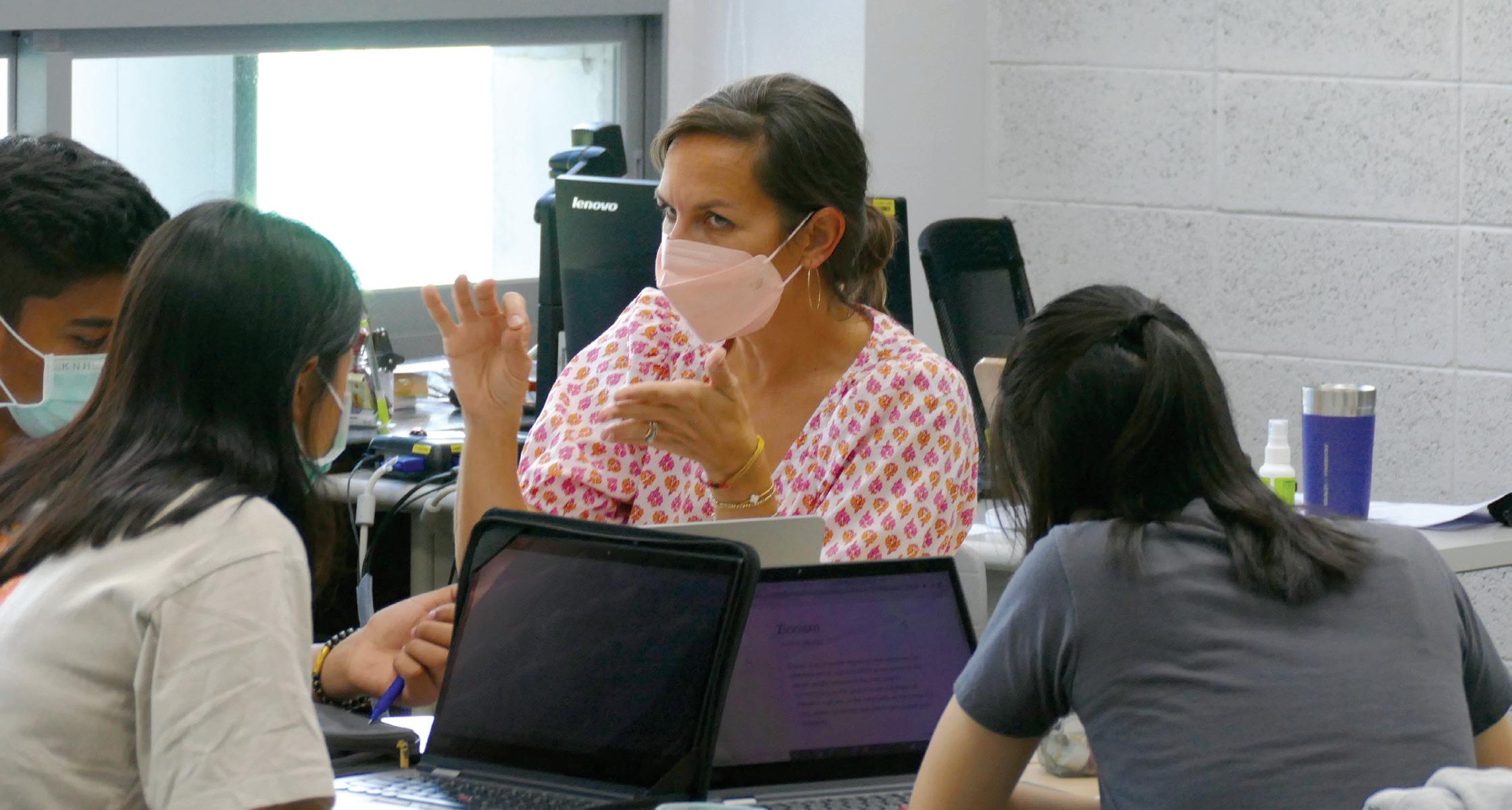
20 minute read
History & Social Studies
HISTORY OF ASIA (USST011)
Duration: 1 year
Credit: 1
Grade: 9
Homework: Moderate
This course presents students with an overview of Asian history through an examination of society, politics, culture, geography, and economics. This course will follow a chronological path with a focus on regions such as East Asia, Southeast Asia, South Asia, and the Pacific Rim. Students should expect to be engaged in the following activities throughout the year: writing in assorted styles, reading, a multitude of perspectives, refining research skills, debating controversial issues, reenacting key historical moments through simulations, annotating, and actively reading primary and secondary documents, watching, and analyzing documentaries and films, and authoring a persuasive research essay.
MODERN WORLD HISTORY (USST03)
Duration: 1 year
Credit: 1
Grade: 10
Homework: Moderate
This course is designed to take students on a thematic and chronological journey of the world from the foundation of the modern world to the 21st century. The students will explore ideological, social, political, economic, cultural, and technological developments. With a focus on the how interaction between the “Global South” (Latin America, Africa, the Middle East, and South Asia) and European powers has created our modern world. In emphasizing these places and developments, the goal is to gain a greater understanding of when, how, and why this history shapes our lives today.
AP WORLD HISTORY: MODERN (USST031)
Duration: 1 year
Credit: 1
Grade: 10
Homework: Heavy
*Satisfies World History requirement
Prerequisite: History and Social Studies Department recommendation.
The purpose of the AP World History course is to develop greater understanding of the evolution of global processes and interaction between different types of human societies. This understanding is advanced through a combination of selective factual knowledge and appropriate analytical skills. The course highlights the nature and patterns of the changes in global communities along with their causes and effects by examining historical time periods from 1200 C.E. to the present. Students are required to take the external AP exam in May.
UNITED STATES HISTORY (USST051)
Duration: 1 year
Credit: 1
Grade: 11
Homework: Moderate
Who was in America before the Europeans came? How did America become America? How does that history shape and impact our future? What role do the people play in the development of the nation? These questions and more are answered in U.S. History, a thematic study of United States History. The year begins with the development of colonies, the quest for independence, forming of the new nation and its efforts to redefine that identity after the Civil War. Second semester covers the development of the United States as a global superpower through World Wars I and II, the turbulence of the Cold War era and the quest for minority equality from the Civil Rights movement to the end of Barack Obama’s historic presidency. Students are assessed based on written work, various oral presentations or projects, daily discussions, and a year-long research paper.
History & Social Studies Flow Chart
AP World History: Modern
AP US History
IBSL Modern World History
IBHL Modern World History 2
IBHL US History 1 Honors IB US History
AP UNITED STATES HISTORY (USST06)
Duration: 1 year
Credit: 1
Grade: 11
*Satisfies US History requirement
Prerequisite: Successful completion of an AP History course or History and Social Studies Department recommendation.
Homework: Heavy
The Advanced Placement US History program is designed to be a rigorous fast-paced course that explores in-depth the major events in American History from the Pre-Columbian Era to the 21st Century with a focus on historical thinking skills. AP US History students use primary and secondary sources to learn about, critically analyze, and develop historical understanding of the major, social, political, cultural, and economic movements and events of American history. This class requires that students read widely and carry out individual and small group research projects. As well, students must write an in-depth analytical research essay. Students are required to take the external AP exam in May.
HISTORY OF MINORITIES IN AMERICA (USST071)
History of Minorities in America
Honors History of Minorities in America
History of the Ancient Greek People
AP Economics
Honors: Introduction to American Law
History of Minorities in America
Honors History of Minorities in America
History of the Ancient Roman People
Seminar: World Religions
Honors Seminar: World Religions
IBSL World Religions
Business and Entrepreneurship
HONORS:
HISTORY OF MINORITIES IN AMERICA (USST071H)
Duration: 1 year
Credit: 1
Grade: 11-12
*Satisfies US History requirement
Homework: Light (Moderate for Honors)
This course examines the history of marginalized communities from their perspective as opposed to the white male perspective through which history is generally taught. Students will study the ways in which women, Black Americans, Asian Americans, Hispanic/Latinx Americans, Indigenous/ Native Americans, people with disabilities, and the LGBTQ+ community have shaped American history. Students consider the ways these groups impacted the forming of America, helped write our collective history, and how they are impacted by current events in the U.S. Students routinely place current events into historical context to figure out solutions to problems, such as systemic racism, while developing a deeper understanding of the interconnected history of marginalized communities in the U.S. Students will be assessed on homework, case study presentations, class discussions and other projects. Students who are taking the class to fulfill the U.S. History requirement will complete a research paper.
Marketing
Honors Marketing
AP Art History
In Iroquois society, leaders are encouraged to remember seven generations in the past and consider seven generations in the future when making decisions that affect the people.
Wilma Mankiller, Principal Chief of Cherokee Nation
IBHL US HISTORY 1 (USST19)
HONORS IB US HISTORY (USST19H)
Duration: 1 year
Credit: 1
Grade: 11
*Satisfies U.S. History requirement Prerequisite: IB Diploma Student or History and Social Studies Department recommendation.
Homework: Heavy
This course, which is the first year of the HL History curriculum, is designed to teach students about thematic topics crucial to understanding the American past and present while also developing skills to comprehend, evaluate, and critically analyze primary and secondary sources. Students will study the founding of the USA (United States of America), slavery, the causes of the civil war and the reasons the Union won the war, the Reconstruction Era, and the 20th century Civil Rights Movement. Heavy emphasis is placed on understanding the perspectives of historians and on writing persuasive essays that will prepare students for college-level writing expectations. Students will also complete a major research essay as part of the curriculum. Students who are enrolled in IBHL US History will take the corresponding external IB exam at the conclusion of the twoyear curriculum. Students who are enrolled in Honors IB US History are not required to take the IB exam.
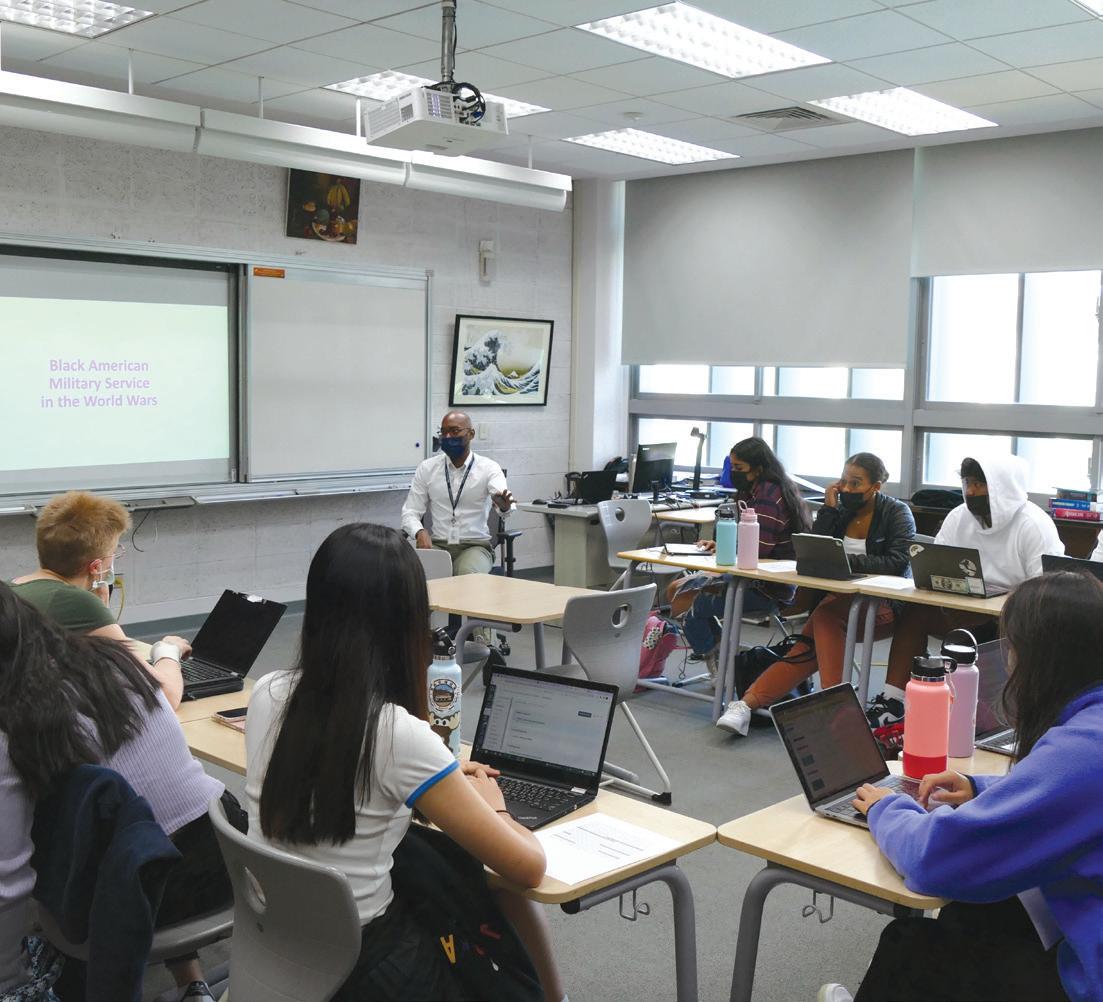
IBSL MODERN WORLD HISTORY (USST201)
IBHL MODERN WORLD HISTORY
Duration: 1 year
Credit: 1
Grade: 12
2 (USST20)
Prerequisite: Successful completion of History of the Americas 1 or IB Diploma Student or History and Social Studies Department recommendation.
Homework: Heavy
The course, which is the 2nd year of the HL History curriculum or instead can be taken as an SL History class, is designed to teach students about important events throughout the world to better understand the 20th century while also developing skills to comprehend, evaluate, and critically analyze both the past and present. This class examines major themes of twentieth century world history: the rise and rule of authoritarian states; the rise of the Cold War, its critical crises, and its end; and the comparison of protest movements in different areas of the world. Heavy emphasis is placed on understanding the perspectives of historians and on writing persuasive essays that will prepare students for college-level writing expectations. Students will complete a major research essay and are expected to take the corresponding external IB exam in May.
AP EUROPEAN HISTORY (USST04)
Duration: 1 year
Credit: 1
Grade: 11-12
Prerequisite: Successful completion of an AP History course, or History and Social Studies Department recommendation.
Homework: Heavy
The Advanced Placement European History program provides students with the analytic skills and content knowledge necessary to deal critically with the interpretive problems of European societies. The course encompasses the social, political, economic, religious, technological, intellectual, and cultural developments of European society from 1450 to the present. The primary aim of the course is to present a history of European societies, institutions and ideals based upon a close reading of secondary source materials and analysis of primary documents. Students are required to take the external AP exam in May.
AP ECONOMICS (USST11)
Duration: 1 year
Credit: 1
Grade: 11-12
Prerequisite: Completion of an AP History or AP Calc AB or History and Social Studies Department recommendation.
Homework: Heavy
This course covers Microeconomics, Macroeconomics, and International Economics. Students will explore topics ranging from decision-making of firms, international trade, exchange rates, monetary policies, and market failures. Students will have opportunities to apply economic theories to global current events and will be prepared to take both the AP Microeconomics and AP Macroeconomics in May.
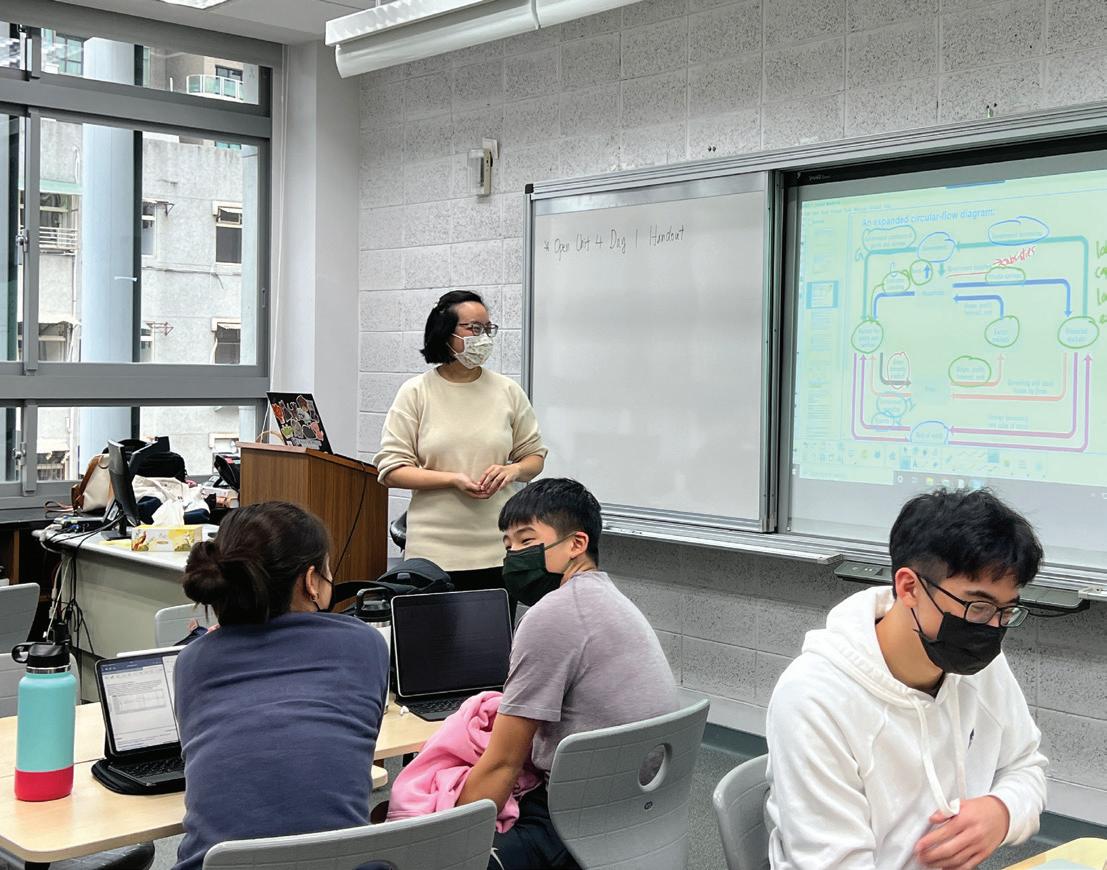
HONORS: INTRODUCTION TO AMERICAN LAW (USST10)
Duration: 1 year
Credit: 1
Grade: 11-12
Prerequisite: None
Homework: Moderate
Introduction to American Law and the Western Legal Tradition is a social studies elective that offers an overview of the fundamentals of the law in the U.S., including the philosophical foundation of the American legal system. The course will include the basics of U.S. Constitutional Law, Criminal Law and the Criminal Justice Process, and Civil Law (such as Torts, Contracts and Corporate Law). This course is not meant to duplicate the rigor of a law school level course; instead, it is a survey meant to give students a basic understanding of the law and how it works, and to encourage them to be active, engaged citizens with the knowledge and skills they need to successfully participate and create change in their communities. We will use case studies, individual research, group discussion/legal arguments, and mock proceedings throughout the course in order to reach our goal.
SEMINAR: WORLD RELIGIONS (USST09)
HONORS SEMINAR: WORLD RELIGIONS (USST09H)

IBSL
WORLD RELIGIONS (USST091)
Duration: 1 year
Credit: 1
Grade: 11-12
Prerequisite: None
Homework: Light (Moderate for Honors and IBSL)
For individuals to navigate and positively impact today’s multicultural world, one needs a deeper and meaningful understanding of the world’s major religions. In this course students will explore beliefs, practices, and modern debates around the major religions of Islam, Hinduism, Buddhism, Taoism, Judaism, and Christianity. We will also explore a variety of belief systems, such as Native American Sioux, Haitian Vodun, Wiccan Goddess, and
Taiwan Ami. Honors students can research any topic related to religion or philosophy such as Eastern Medicine, yoga, atheism, etc. Through this class students will learn about different religions and philosophies, experience some of their practices through activities, guests, and field trips, and ultimately debate current issues around these topics.
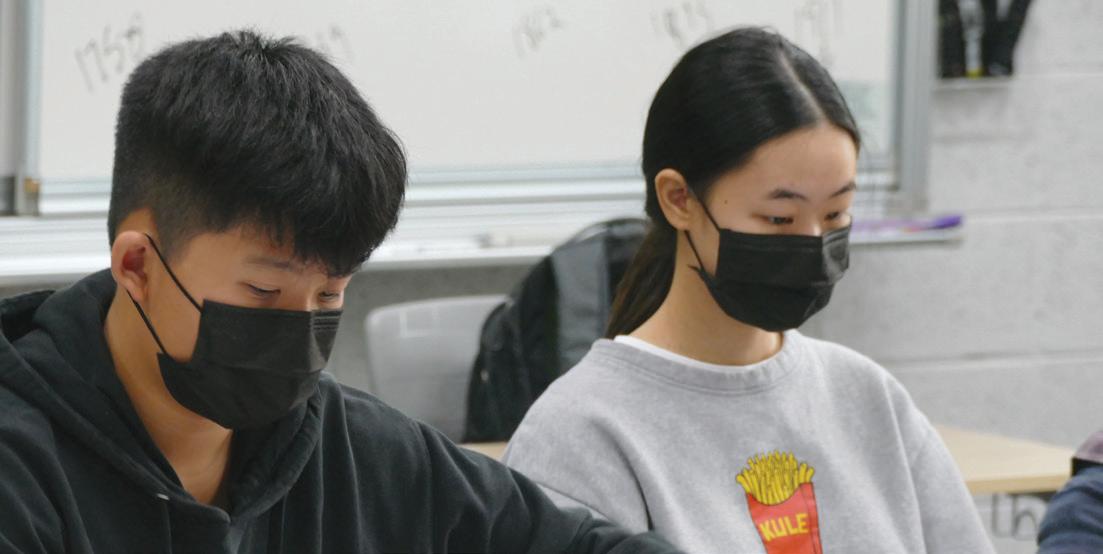
Students who chose to take the IBSL World Religions option are required to complete an investigative study and take the IB exam in May.
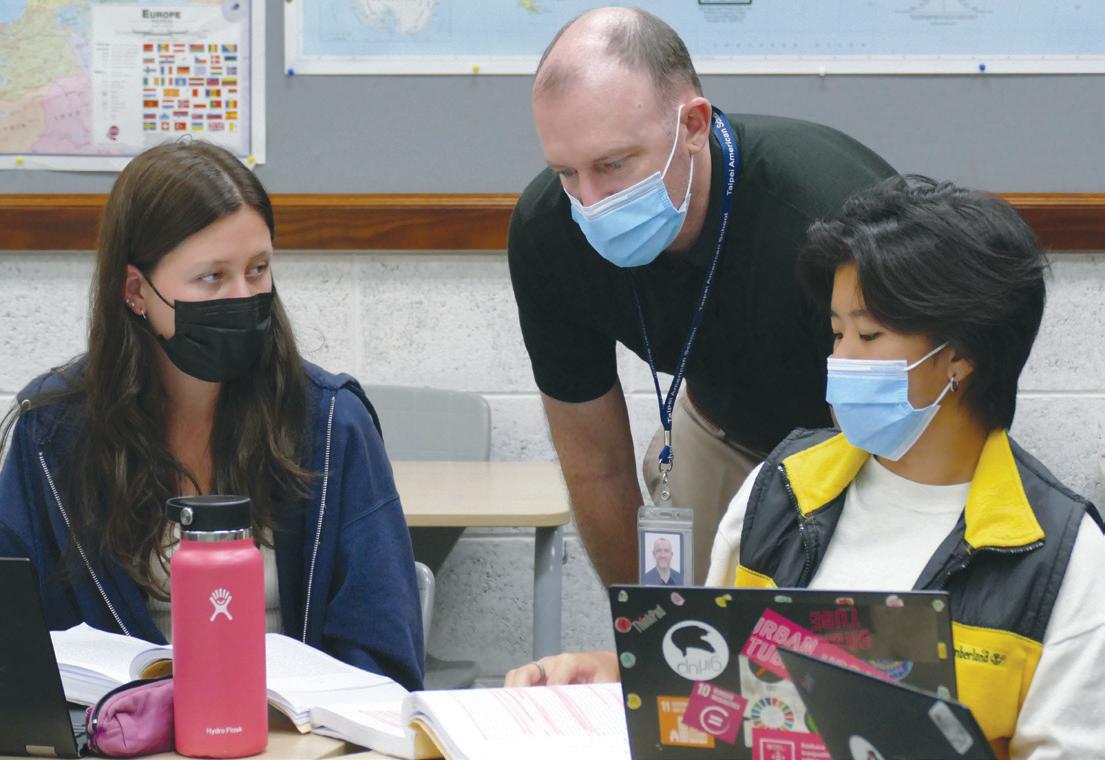
AP ART HISTORY (UART32)
Duration: 1 year
Credit: 1
Grade: 10-12
Prerequisite: None
Homework: Heavy
In the AP Art History course, students are invited to discover the diversity of and connections among global artistic traditions. Students interact with different types of art, observing and analyzing relationships of form, function, content, and context through their reading, discussion, research, and writing. Using 250 representative works of art spanning prehistory to the present comprise the course content, students will study functions and effects of art and consider influential forces like belief, class, gender, ethnicity, patronage, and politics in their critical analyses of art forms. They will investigate how humans respond to the world and communicate their experiences through art making by examining chronology, styles, techniques, and themes to compare, contrast, and interpret art forms from varied perspectives and cultures. Students should be proficient in reading and writing. The AP Art History course is an elective credit class, meaning that it does not meet the graduation requirement for fine arts.
HISTORY OF THE ANCIENT GREEK PEOPLE (UCLS101)
Duration: 1 semester, offered in Semester 1 only
Credit: 0.5
Grade: 9-12
Prerequisite: None
Homework: Light
An introduction to the history of the ancient Greek world to the end of the Hellenistic Period, this course is based on reading ancient authors and documents in translation. Examining ancient artifacts, including architecture and infrastructure, and tracing the cultural and artistic development of Greek civilization. The focus of the course is on examining the emergence and development of a Panhellenic Greek cultural identity. In addition, students will study the history of Mediterranean archaeology and learn about the most recent developments in that field as they pertain to the ancient Greek peoples.
HISTORY OF THE ANCIENT ROMAN PEOPLE (UCLS102)
Duration: 1 semester, offered in Semester 2 only
Credit: 0.5
Grade: 9-12
Prerequisite: None
Homework: Light
An introduction to the history of the ancient Roman world to the age of Constantine, this course is based on reading ancient authors and documents in translation, examining ancient artifacts, including architecture and infrastructure, and tracing the cultural and artistic development of Roman civilization. The focus of the course is on the problems that attended the development and spread of a shared Roman cultural identity in the disparate places that were governed from Rome. In addition, students study the history of Mediterranean archaeology and learn about the most recent developments in that field as they pertain to the history of Rome.
BUSINESS & ENTREPRENEURSHIP (USST513)
Duration: 1 year
Credit: 1
Grades: 10-12
Prerequisite: None
Homework: Light
Advancing in today’s competitive and continually changing environment requires business insight. This course equips students with the fundamental business and entrepreneurial principles that allow them to navigate the business landscape of today and the future. Divided into five separate modules, this course covers: basic economic theory, business structure and organization, the role of marketing in developing business strategy, accounting and finance, and entrepreneurship. Students are introduced to the concepts through discussions of the textbook reading and observations of current events and deepen their comprehension by applying the principles to case studies and simulations. This course further develops students’ critical thinking skills as they analyze and resolve real-world business issues. This survey course is good for students with an interest in business, entrepreneurship, and economics who may not be ready or have time for the college level AP Economics course.
MARKETING (USST53) HONORS MARKETING (USST53H)
Duration: 1 year
Credit: 1
Grades: 10-12
Prerequisite: None
Homework: Light (Moderate for Honors)
Marketing goes beyond just advertising – it involves understanding how changing customer perceptions and preferences become central determinants of an organization’s strategy and long-run success. This course introduces students to fundamental principles and analyses involved with managing marketing activities, as well as to methods used to assess and solve marketing issues. Study modules include determining marketing strategy, identifying trends in the marketplace, customer behavior and market segmentation, market research, product management, pricing, channels of distribution, and the promotional mix. Students learn concepts through classroom discussions of textbook reading and current events and deepen their understanding through case studies, group projects, and a marketing simulation program developed by an INSEAD marketing professor. Students also complete and present a research-based marketing plan for a company of their choice.
Honors students read additional books to extend their knowledge and comprehension of marketing topics covered. This course is good for students who have an interest in business and economics who may not be ready or have time for the college level AP Economics course.
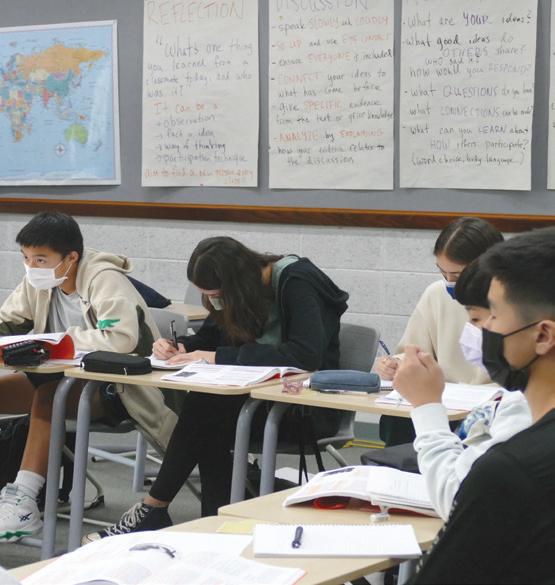

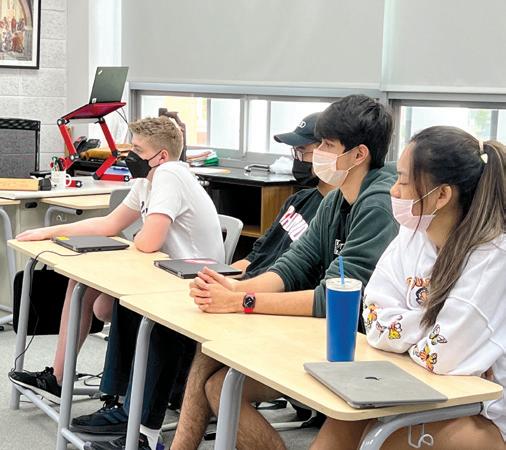
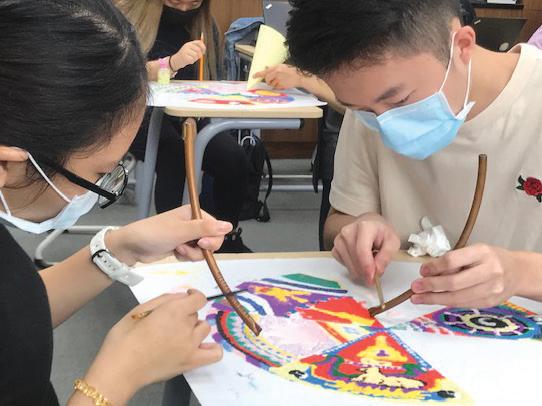

US MATH CALCULATOR/TECHNOLOGY USAGE POLICY
A TI-84 Plus CE graphing calculator is required for all Upper School math courses. Students should NOT purchase other models. Some other models have a Computer Algebra System (CAS) and IB does not allow CAS calculators to be used. Please do not purchase other TI models (or other brands), as they are not appropriate for our classes and may not have similar capabilities as the models we use. The SAT, ACT, AP, and IB will allow use of the TI-84 Plus CE model on its exams. Calculators are available in the Tiger Shop and may also be purchased through online retail sites.
Understanding that a comprehensive mathematics curriculum should help students learn to use calculators, computers, and other tools of technology as a part of learning mathematics, the US Mathematics Department promotes the use of technology as an integral part of our mathematics program. This position is supported by the National Council of Teachers of Mathematics (NCTM) that states: “…instructional programs should use technology to help all students understand mathematics and should prepare them to use mathematics in an increasingly technological world.” “…Technology is essential in teaching and learning mathematics, it influences the mathematics that is taught and enhances students’ learning.” The NCTM makes it clear that such tools do not replace the need to learn basic math skills, to compute mentally, or to do reasonable paper and pencil computation. In fact, the NCTM Standards suggest that when used appropriately, calculators and computers enable students to explore new areas of mathematics and to tackle challenging mathematical problems that would not be possible without the help of such tools. In line with this philosophy, we offer the following policy on the use of technology.
We require the appropriate use of technology in the classroom. Students need to consider when use of mental mathematics, paper & pencil, or a calculator is appropriate. Calculator dependency, as evidenced by the use of a calculator for multiplying single- or double-digit numbers, should be avoided. (Keep in mind that over one-half of the AP Calculus exam does not allow calculator use. Also note that a portion of the SAT test does not allow calculator use as well.)
We recognize that calculators left unattended may be targets for theft. To help combat theft, the US Mathematics Department has purchased an engraver that students may use at any time that classes are not in session for engraving their name on their calculator. We strongly encourage students to engrave their calculators! Engraving can be done in the math office before school, during breaks, and after school.
Students will be required to show all work in their solutions and may have to explain how they arrived at their solution as a demonstration of their understanding. This applies to homework, quizzes, and tests, whether a calculator is used or not. The calculator should not replace the understanding of fundamental concepts of mathematics. Therefore, a reasonable emphasis will be placed on teaching with mental computation and paper & pencil calculation.
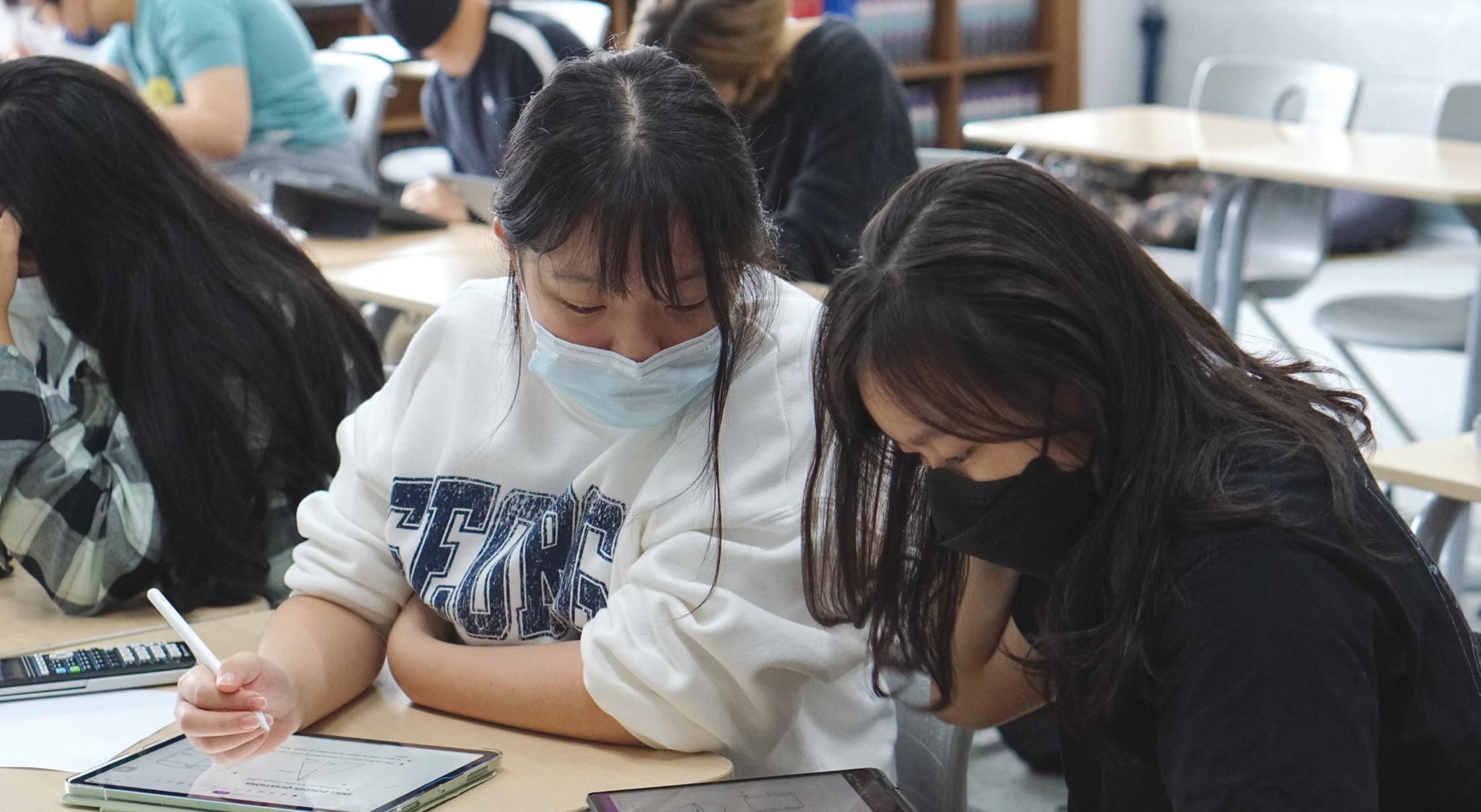
Ib And Ap Math Courses
The AP Calculus AB and BC courses are designed to mirror typical undergraduate college Calculus 1 and 2 courses for students heading into math-focused majors and careers. The focus is purely on differential and integral calculus with a mostly analytical approach. AP exams may be taken at any grade level. The IB math curriculum has two branches: Analysis & Approaches and Applications & Interpretation. Both branches include calculus and statistics and are equivalent in difficulty. IB Diploma students should plan on taking the SL external exam in grade 11 or 12. The HL external exam is offered in grade 12 only.
The Analysis & Approaches branch focuses more on a deep understanding of mathematics, concentrating more on calculus than statistics. Students will be asked to prove, investigate, etc. An analytical approach is encouraged. This branch is aimed at students who will go on to study subjects with substantial mathematics content such as mathematics itself, engineering, physical sciences, or economics for example. Analysis & Approaches will be offered at the SL and HL level.
The Applications & Interpretation branch focuses more on statistics than calculus, and on the role of mathematics and technology in a diverse array of contexts. Using tech is the norm with an emphasis on interpreting those results. This branch is aimed at students who will go on to study subjects such as social sciences, natural sciences, statistics, business, some economics, psychology, and design, for example. Applications & Interpretation will be offered at the SL and HL level.
Courses Offered Through Global Online Academy
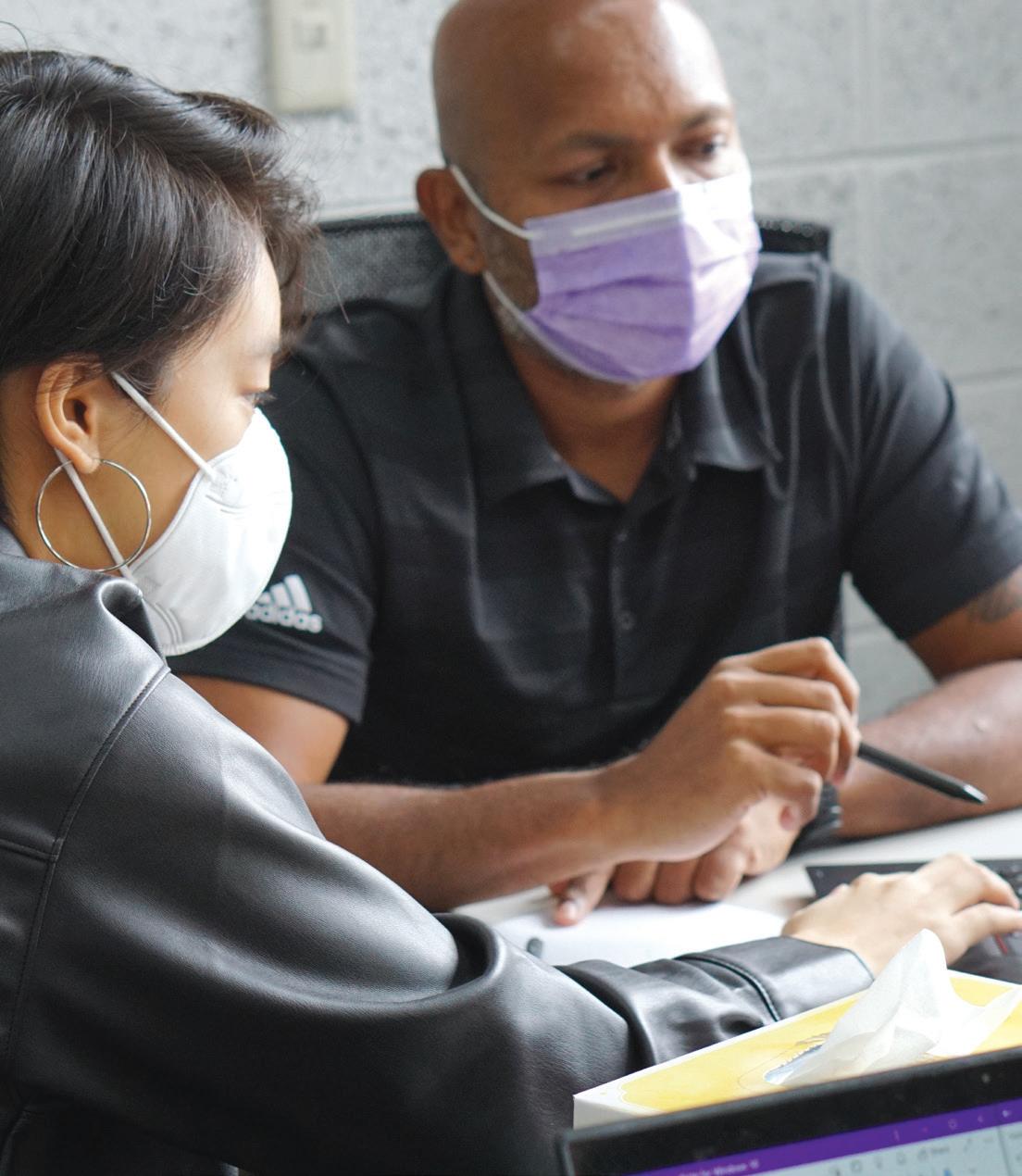
Students who complete AP Calculus BC can choose to take a math course online through Global Online Academy. Course selection varies each year and the latest information can be found at https://globalonlineacademy.org/. Please discuss with your math teacher and academic counselor about how to sign up.
ALGEBRA 1 (UMAT02)
Duration: 1 year
Credit: 1
Prerequisite: Successful completion of Pre-Algebra or Introduction to Algebra
Homework: Moderate
Included in this course is the real number system, linear equations and their graphs, inequalities, polynomials, rational expressions, quadratic equations, relations and functions.
Text: Beginning Algebra, 9th edition (ISBN: 978-0-13-418779-2)
GEOMETRY (UMAT03)
Duration: 1 year
Credit: 1
Prerequisite: Successful completion of Algebra 1 or recommendation of the department
Homework: Moderate
While this course does not require proofs as Honors Geometry does, it examines many of the same concepts through constructions, drawings, and explorations. These concepts include points; lines and planes; congruence and similarity of triangles and other polygons; angles; circles; perimeter; area and volume; Pythagorean Theorem; and an introduction to trigonometry.
Text: Geometry (ISBN: 978-0-13-328115-6)
HONORS GEOMETRY (UMAT041)
Duration: 1 year
Credit: 1
Prerequisite: Successful completion of Algebra 1 and recommendation of the department
Homework: Heavy
Students study the basic definitions used in deductive reasoning, basic principles of logic, properties of different polygons, perpendicularity, congruence, similarity of triangles, properties of circles, constructions, areas, and volumes. Proofs will be studied, but not emphasized.
Text: Geometry (ISBN: 978-0-13-328115-6)
ALGEBRA 2 (UMAT06)
Duration: 1 year
Credit: 1
Prerequisite: Successful completion of Algebra 1 and Geometry or Honors Geometry; recommendation of the department
Homework: Moderate
This course is a standard college prep class. Algebra 2 provides a thorough review of the topics covered in Algebra 1 and develops concepts in complex numbers, polynomial and rational functions, exponential and logarithmic functions, conic sections, probability, and sequences and series.
Text: Beginning & Intermediate Algebra, 6th edition (ISBN: 978-0-13419309-0)
MODELING, DESIGN, & FINANCE (UMAT065)
Duration: 1 year
Credit: 1
Prerequisite: Successful completion of Algebra 2 or recommendation of the department Homework: Light
This course is designed to give students access and experience to a wide range of mathematical models and techniques used for solving problems in many contexts of human endeavor. These contexts include business, probability, and research focused from the individual and community perspective. Students will work on developing proficiency with mathematical skills and strategies in problem-solving through topics such as applied geometry, financial literacy, and statistics.
Text: None
HONORS ALGEBRA 2 (UMAT070)
Duration: 1 year
Credit: 1
Prerequisite: Successful completion of Honors Geometry and recommendation of the department
Homework: Heavy
This course extends the topics covered in Algebra 1 and develops concepts in complex numbers, polynomial and rational functions, exponential and logarithmic functions, conic sections, probability, and sequences and series.
Text: Intermediate Algebra, 4th edition (ISBN: 978-0-13-455580-5)
PRECALCULUS (UMAT08)
Duration: 1 year
Credit: 1
Prerequisite: Successful completion of Algebra 2
Homework: Moderate
This course covers essentially the same curriculum as Honors Precalculus, but several topics of study are not covered at the same depth as the Honors course. The course consists of such topics as trigonometry, polynomial functions, logarithms and exponents, and complex numbers. Successful completion of this course should prepare a student for first term introductory to calculus in a typical U.S. college.
Text: Precalculus by Robert Blitzer, 7th edition (ISBN: 978-0-13-692219-3)
HONORS PRECALCULUS (UMAT12)
Duration: 1 year
Credit: 1
Prerequisite: Successful completion of Honors Algebra 2 and recommendation of the department
Homework: Heavy
This course includes trigonometry, polynomial functions, logarithms and exponents, and complex numbers. Successful completion of this course should prepare a student for AP Calculus AB or first term calculus in a typical U.S. college.
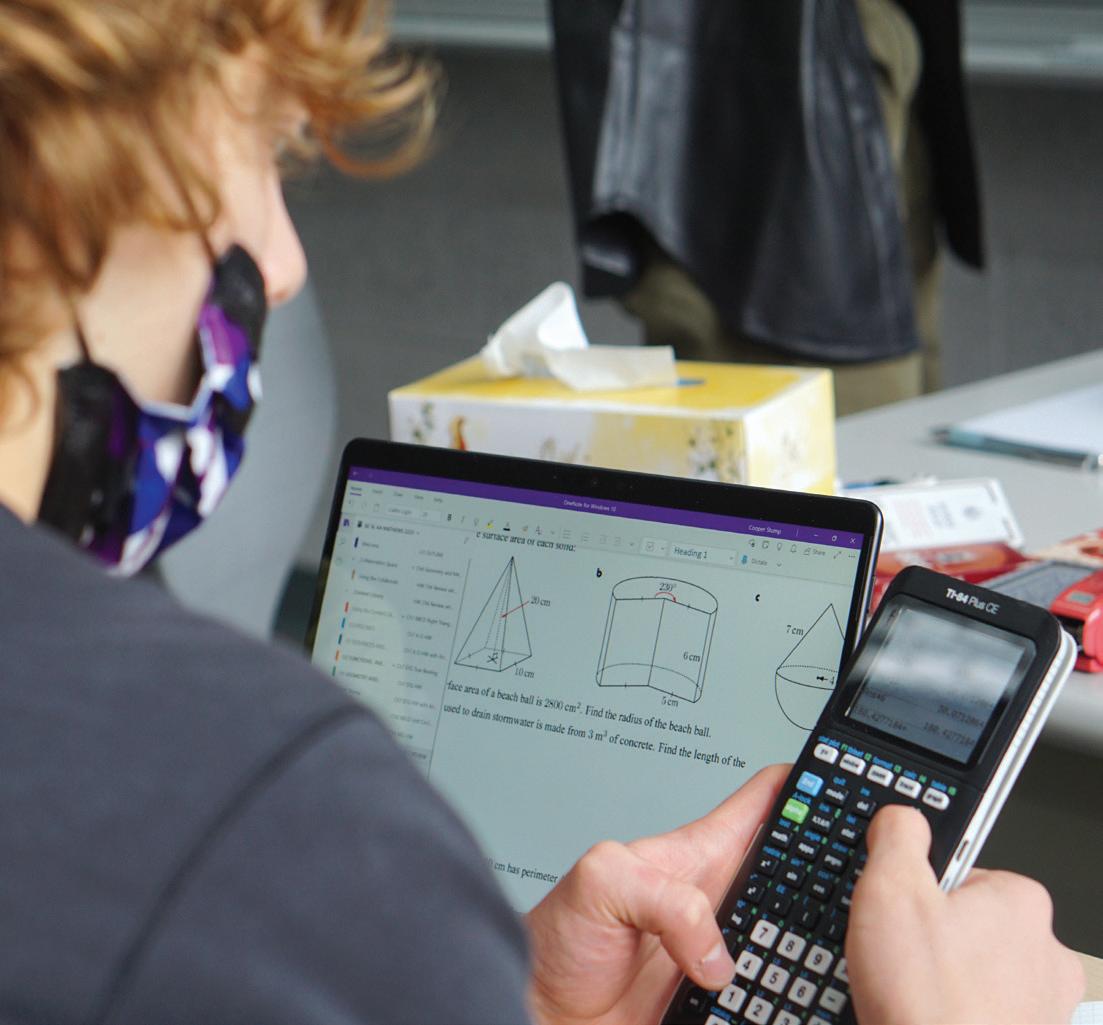
Text: Precalculus by Robert Blitzer, 7th edition (ISBN: 978-0-13-692219-3)
CALCULUS (UMAT121)
Duration: 1 year
Credit: 1
Prerequisite: Successful completion of Honors Precalculus and recommendation of the department
Homework: Moderate
This course includes a review of polynomials, trigonometric, exponential, and logarithmic functions, followed by discussion of limits, derivatives, and applications of differential calculus to real-world problem areas. An introduction to integration concludes the course.
Text: Calculus: Graphical, Numerical, Algebraic (ISBN: 978-0-13-331161-7)
AP CALCULUS AB (UMAT13)
Duration: 1 year
Credit: 1
Prerequisite: Successful completion of Honors Precalculus and recommendation of math department
Homework: Heavy
This course is similar to first semester calculus as taught in most U.S. colleges and universities. Topics include differentiation of polynomials, trigonometric, exponential, and logarithmic functions as well as integration techniques and theory. Students are required to take the AP exam at the completion of the course.
Text: Calculus: Graphical, Numerical, Algebraic (ISBN: 978-0-13-331161-7)
AP CALCULUS BC (UMAT14)
Duration: 1 year
Credit: 1
Prerequisites: Successful completion AP Calculus AB or Honors
Precalculus and recommendation of the department
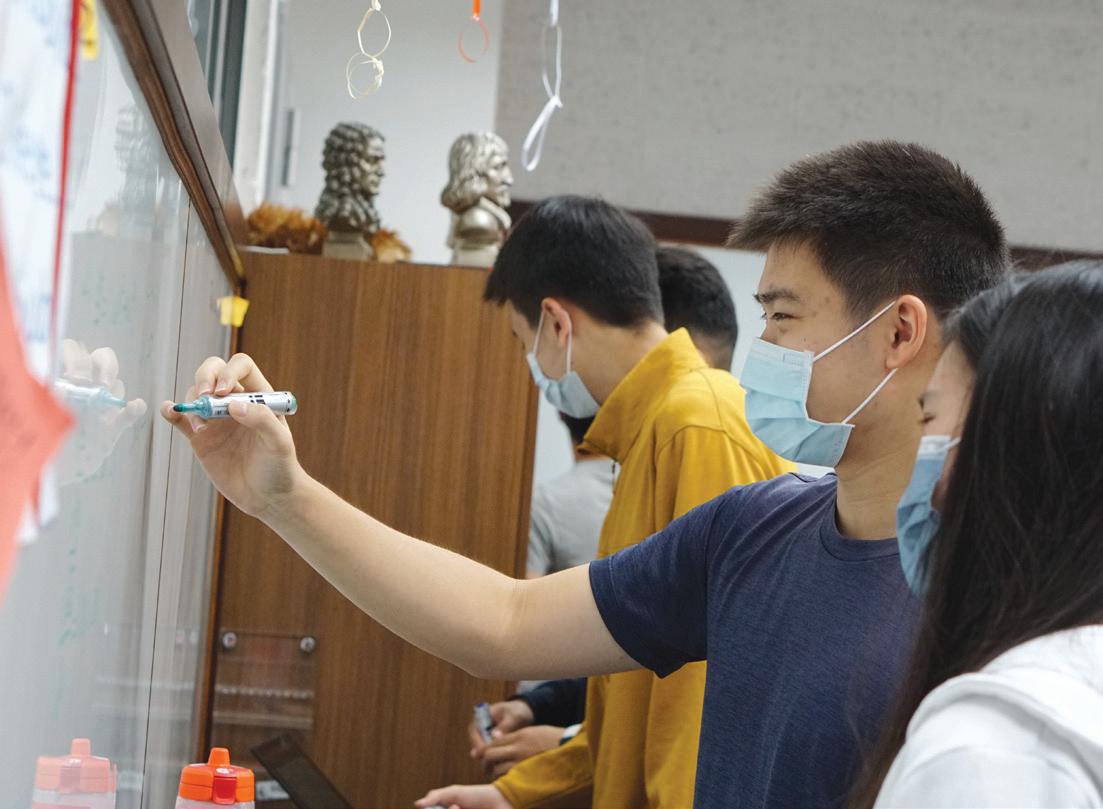
Homework: Heavy
This course is intended for those students who have advanced mathematical ability. The curriculum is similar to the first two semesters of college calculus as taught in most United States colleges and universities. The Calculus topics covered include integration techniques, polar coordinates, vectors, parametric equations, sequences and series, differential equations and slope fields. Projects that extend the course content will be an integral component of the course. Students are required to take the AP Calculus BC exam upon completion of the course.
Text: Calculus (ISBN: 978-0-618-50304-9)
AP STATISTICS (UMAT09)
Duration: 1 year
Credit: 1
Prerequisite: Successful completion of Precalculus or concurrent with Honors Precalculus or recommendation of the department
Homework: Heavy
This course is similar to a first semester statistics course as taught in most U.S. colleges. Students are introduced to the major concepts and tools for collecting, analyzing, and drawing conclusions from data. An external exam at the end of the year can provide students with college credit. Students are required to take the AP exam.

Text: The Practice of Statistics for AP (ISBN: 978-1-4641-0873-0)
HONORS MODERN TOPICS IN MATHEMATICS (UMAT22)
Duration: 1 year
Credit: 1
Prerequisite: Successful completion of AP Calculus BC or IBHL Year 2 Math and recommendation of math department
Homework: Heavy
This is a university-level course for advanced students who have a passion for mathematics. Topics studied will include Differential Equations, Linear Algebra, Multi-Variable Calculus, and other advanced math topics.
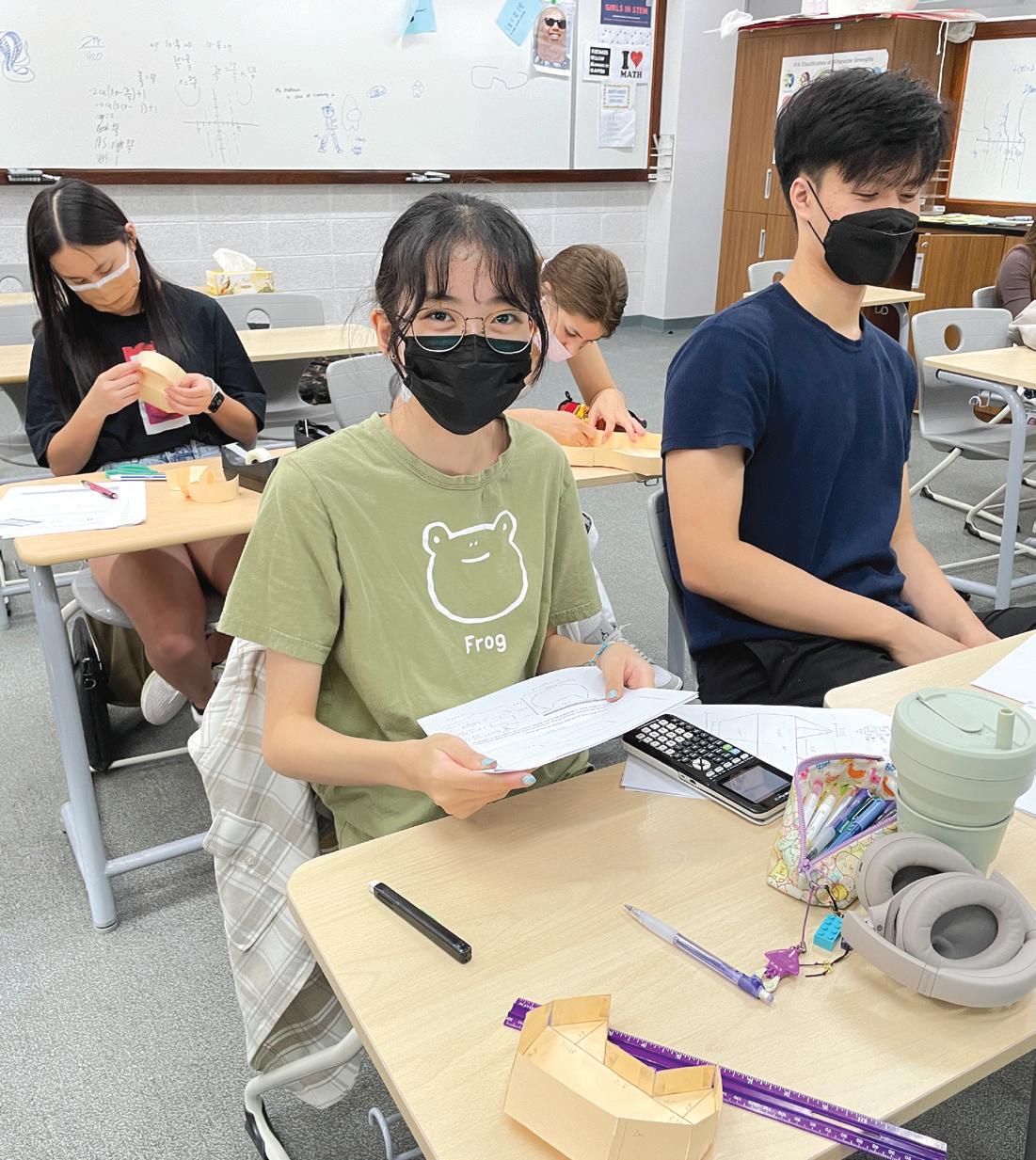
Text: Various resources will be recommended throughout the course as needed
IBSL MATH: APPLICATIONS & INTERPRETATION 1 (UMAT31)
IBSL MATH: APPLICATIONS & INTERPRETATION 2 (UMAT32)
Duration: 2 years
Credit: 1 per year
Prerequisite: Successful completion of Algebra 2 and recommendation of the department
Homework: Heavy
The IB Application & Interpretation Syllabus is followed in this two-year course. Five main topics are studied: Algebra, Functions, Geometry & Trigonometry, Statistics & Probability, and Calculus. The course culminates in an external IBSL Math Exam at the end of Year 2. Taking the IB exam is required of all Year 2 students. A Mathematics Exploration is also required of all students, which is an independent written paper into a mathematics topic that each student prepares, typically during Year 2. This paper is internally assessed as part of the IB score. This course focuses more on statistics than calculus, and on the role of mathematics and technology in a diverse array of contexts. Using tech is the norm with an emphasis on interpreting those results. This course is aimed at students who will go on to study subjects such as social sciences, natural sciences, statistics, business, some economics, psychology, and design, for example.
Text: Haese Mathematics Core Topics SL Book 1 (ISBN: 978-1-92548955-2) and Book 2 (ISBN: 978-1-925489-57-6)
IBHL MATH: APPLICATIONS & INTERPRETATION 1 (UMAT33)
IBHL MATH: APPLICATIONS & INTERPRETATION 2 (UMAT34)
Duration: 2 years
Credit: 1 per year
Prerequisite: Successful completion of Honors Algebra 2 or Honors
Precalculus and recommendation of the department
Homework: Heavy
This course includes the curriculum of UMAT31 and UMAT32, with an additional 90 hours of study in the five topic areas listed in the SL course description. Year 2 students also complete a written paper assessed internally and sit for the external exam during grade 12.
Text: Haese Mathematics Core Topics HL Book 1 (ISBN: 978-1-92548958-3) and Book 2 (ISBN: 978-1-925489-60-6)
IBSL MATH: ANALYSIS & APPROACHES 1 (UMAT41)
IBSL MATH: ANALYSIS & APPROACHES 2 (UMAT42)
Duration: 2 years
Credit: 1 per year
Prerequisite: Successful completion of Honors Algebra 2
Homework: Heavy
The IB Analysis & Approaches Syllabus is followed in this two-year course. Five main topics are studied: Algebra, Functions, Geometry & Trigonometry, Statistics & Probability, and Calculus. The course culminates in an external IBSL Math Exam at the end of Year 2. Taking the IB exam is required of all Year 2 students. A Mathematics Exploration is also required of all students, which is an independent written paper into a mathematics topic that each student prepares, typically during Year 2. This paper is internally assessed as part of the IB score. This course focuses more on calculus than statistics, and on a deep understanding of mathematics. Students will be asked to prove, investigate, etc. An analytical approach is encouraged. This branch is aimed at students who will go on to study subjects with substantial mathematics content such as mathematics itself, engineering, physical sciences, or economics for example.
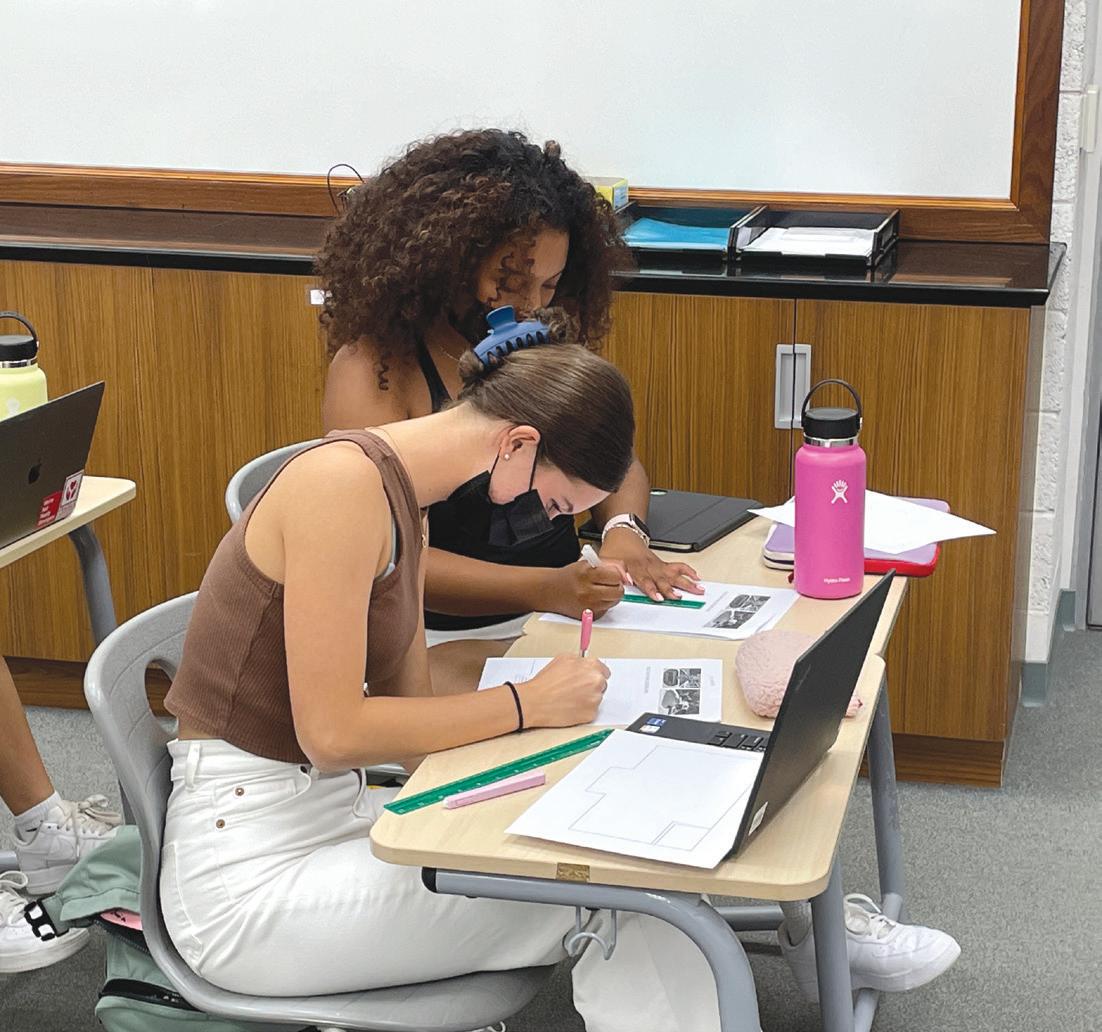
Text: Haese Mathematics Core Topics SL Book 1 (ISBN: 978-1-92548955-2) and Book 2 (ISBN: 978-1-925489-56-9)
IBHL MATH: ANALYSIS & APPROACHES 1 (UMAT43)
IBHL MATH: ANALYSIS & APPROACHES 2 (UMAT44)
Duration: 2 years
Credit: 1 per year
Prerequisite: Successful completion of Honors Algebra 2 or Honors
Precalculus and recommendation of the department
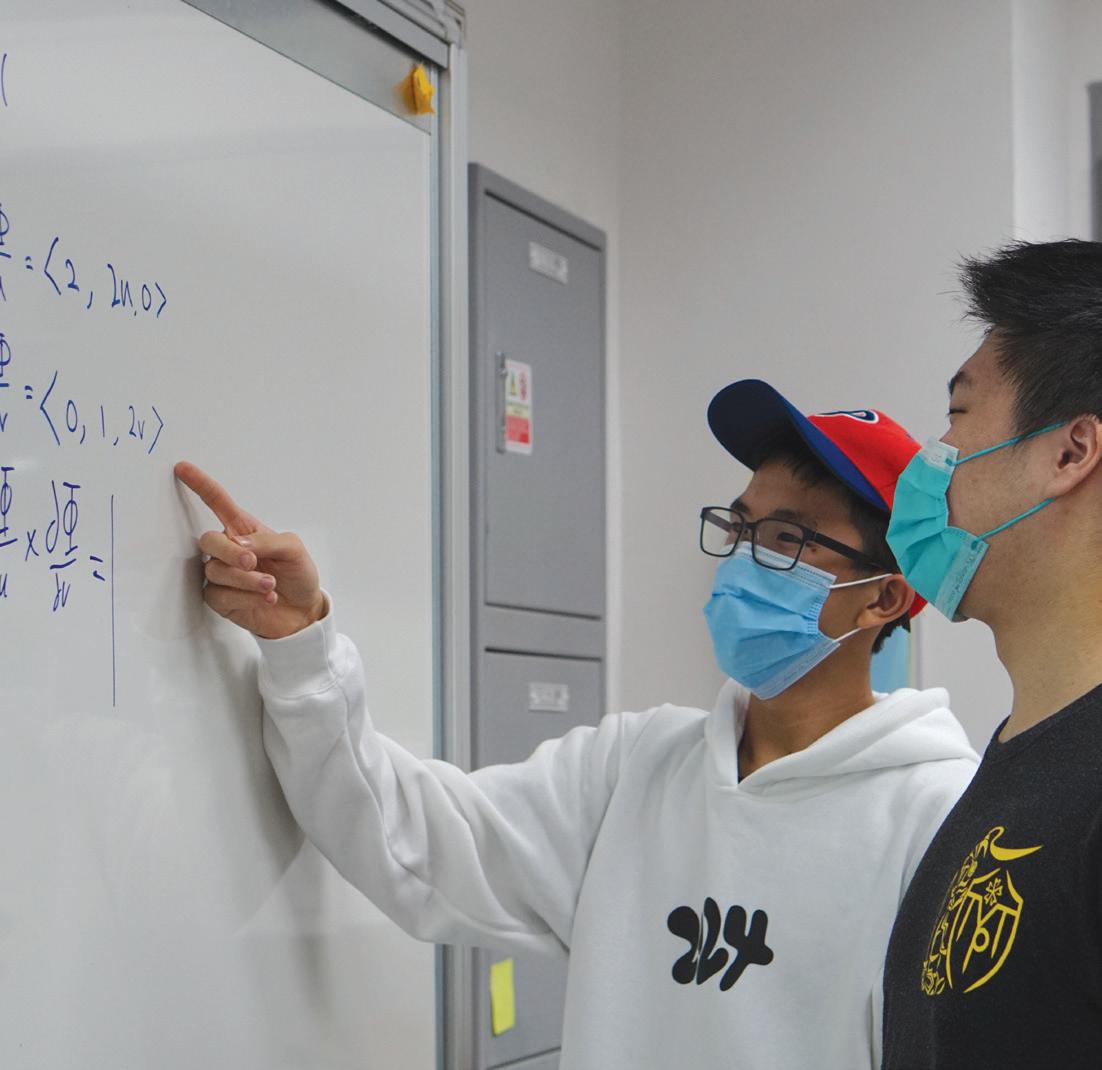
Homework: Heavy
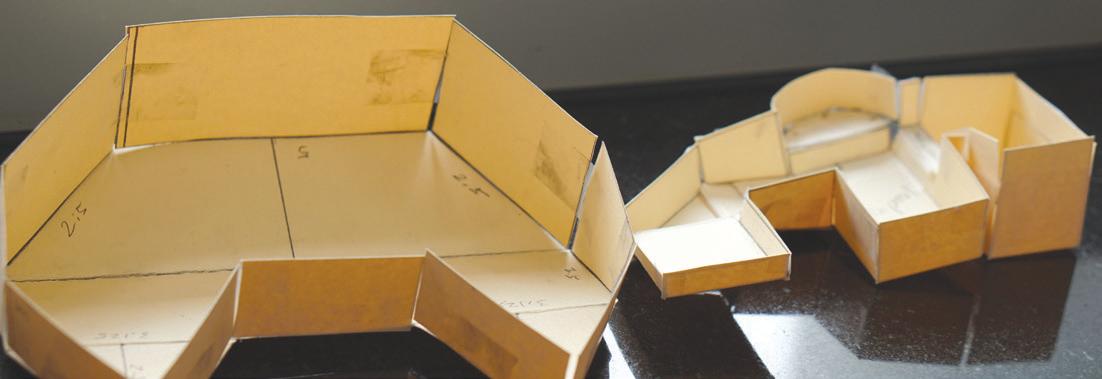
This course includes the curriculum of UMAT41 and UMAT42, with an additional 90 hours of study in the five topic areas listed in the SL course description. Year 2 students also complete a written paper assessed internally and sit for the external exam during grade 12.
Text: Haese Mathematics Core Topics HL Book 1 (ISBN: 978-1-92548958-3) and Book 2 (ISBN: 978-1-925489-59-0)









